AUTHOR’S NOTE: The COVID-19 pandemic has progressed significantly since this story was published at the beginning of March and recommendations for travel have changed. Please consult more recent guidance from government authorities in informing your plans.
COVID-19: It’s here, it’s spreading, and it has people very worried. Public health authorities everywhere are hard at work containing this newest coronavirus strain, but the global ripple effects are already huge. And as with previous infectious disease outbreaks air travel is getting a lot of scrutiny as a potential means of disease spread across borders.

Feeling stressed? Here’s two adorable teddy bears on a flying hospital on an MD-11 – Photo: Orbis International
There’s no certainty about how far the disease will spread and how the aviation world will respond. But since some of you may have trips on the books or plans in the works, I wanted to take a brief moment to share some thoughts and resources. We discuss the basics of the virus, the level of risk if you fly during the epidemic, how to reduce your risk, whether you need to change your flight plans, and how coronavirus is impacting the aviation industry.
Before we dive into things, two big caveats:
- I’m a physician in my day job, but I’m NOT a trained public health professional or an infectious disease specialist. You should be paying closest attention to the updates and recommendations of trustworthy sources like the CDC and WHO.
- This story is evolving fast, so no guarantees that everything in here is up to date at the time you read this.
Read on for a quick take on the state of flying in the era of COVID-19, and what the epidemic may mean for you.
Founded in 1919, KLM is actually the world’s oldest airline still flying under its original name. How do you keep an airline with that long of a history feeling fresh? New planes definitely help, and for KLM’s long-haul fleet the freshest faces are its 787 Dreamliners.
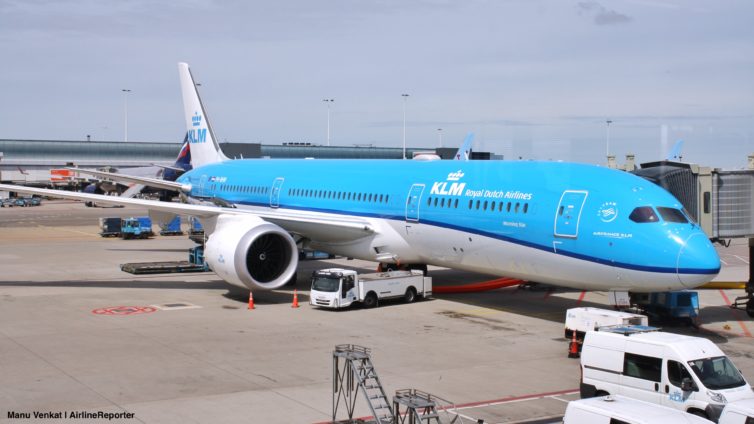
Since joining the fleet a few years ago, the 787-9 has been KLM’s pride and joy. One of my very first AirlineReporter stories was a KLM pop-up exhibit in San Francisco back in 2016. Both then and now, folks at the airline are super proud of the Dreamliner fleet and its newest-generation onboard product. A few months ago, I scored a great deal on an award ticket from San Francisco to Amsterdam and on to Rio, and I’d get to try KLM’s long-haul Dreamliner service along the way. And it ended up being one of the best international business class experiences I’ve had.
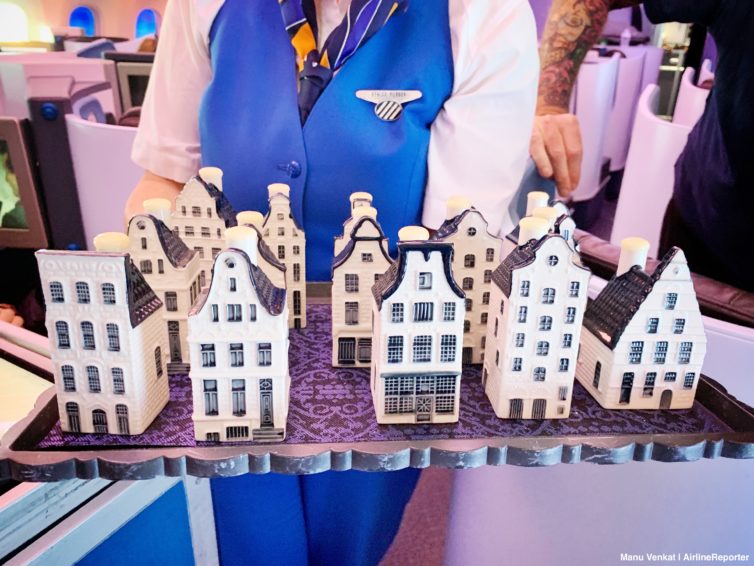
For more of the highlights — from gin-filled ceramic houses and fancy Dutch glassware, to bubbly flight attendants and incredible views of that Dreamliner wing flex — keep on reading!
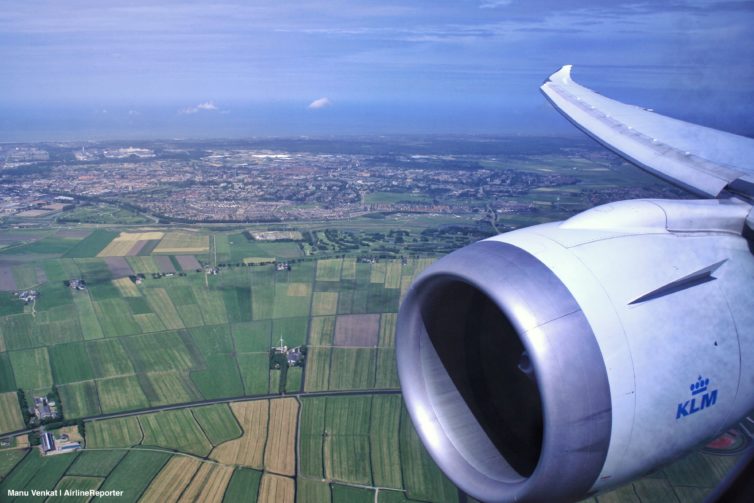

Global Entry kiosks seen at HOU’s international terminal unveiling in 2014
The State of New York has recently reminded all of us that it is time to either get or renew your Global Entry… and a bit at their expense. No, this isn’t a call to be opportunistic. Well, maybe a little. Hear me out…
Recently, U.S. Customs and Border Protection (CBP) announced that New York residents are being cut off from Global Entry (both applications and renewals). “New York residents will no longer be eligible to apply for or renew membership in CBP Trusted Traveler Programs and CBP will cancel all pending Trusted Traveler Program applications submitted by residents of New York,”according to a February 6th CBP press release. “New York residents who are currently enrolled in Trusted Travel Programs will retain their benefits until their memberships expire.”
The CBP will not comment on the volume of enrollments by state, but it is safe to assume that the most populated city in the U.S., which also happens to be the world’s financial center, makes up a sizable chunk. With New York enrollment activity being placed on pause, due to political nonsense, now is the time to take advantage of short lines. Yes, this is an advantage to the rest of us. But by shifting our applications forward, we can clear the way for when New York is again approved. Short lines for us now, and a slightly better experience for our New York friends, when their pent-up demand rolls in. Win-win for everyone! Sort of… given the situation anyhow.
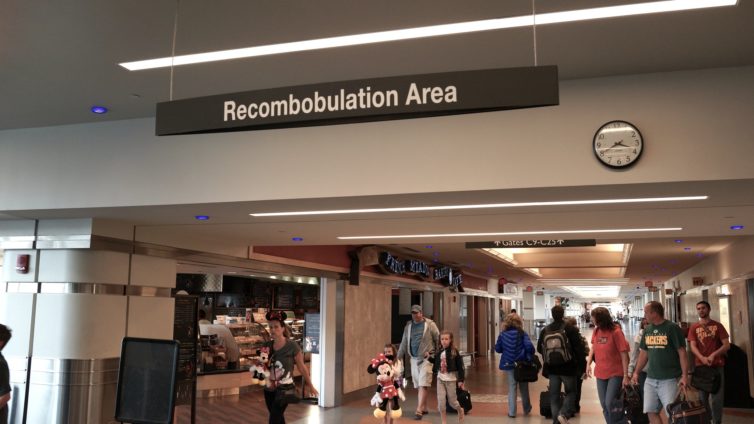
As a known-traveler you won’t need to use the recombobulation area just past the TSA checkpoint at Milwaukee’s General Mitchell airport. – Photo: Lynn Friedman (Creative Commons)
Why Global Entry? It’s better than TSA Pre✓™
Global Entry (GE) is one of a few trusted/known traveler programs which offers perks such as TSA Pre✓™. “But I already regularly get Pre✓™ without applying!” This is a totally valid argument: Why buy the cow when you can get the milk for free? In 2014, I wrote about why applying for Pre✓™ is a waste of time and money. And I stand by that to this day. Pre✓™ is $85 for a five-year membership. GE is an extra $15 (just $3 more per year) and you get Pre✓™ plus expedited passage through U.S. customs. This expedited entry works not just at airports, but also border crossings, and sea ports of entry… if boats are your sort of thing (#BoatReporter).
Even if you don’t have plans to travel abroad, wouldn’t it be nice to have Global Entry setup in the event an opportunity presented itself? I mentioned above that Global Entry works for border crossings as well. I was surprised how often I ended up using my membership to re-enter the U.S. from quick trips to Canada and Mexico. For me, I’d pay $15 to skip the line with just one crossing, so the extra cost has more than paid for itself in my first four years of membership.
 What do you get when you combine writing about airline travel since 2008, with a few decades of being a sarcastic chap? Unsolicited Travel Advice from David (the Editor-in-Chief of this dog and pony show) — that’s what! There are way too many travel-related click-bait stories out there that give you boring and questionable information from “experts”. This series will be different — I will give you entertaining, possibly less questionable information, while not caring about any sort of clicks or bait. Let me set the mood. Imagine that you and I are hanging out, when we have just hit upon an interesting airline/travel topic (safest airline seats) and I am fired up and ready to spew my thoughts and opinions. When I wrap up, I am hoping that you won’t just awkwardly stare at me, but instead continue the conversation in the comments. Let’s do this…
What do you get when you combine writing about airline travel since 2008, with a few decades of being a sarcastic chap? Unsolicited Travel Advice from David (the Editor-in-Chief of this dog and pony show) — that’s what! There are way too many travel-related click-bait stories out there that give you boring and questionable information from “experts”. This series will be different — I will give you entertaining, possibly less questionable information, while not caring about any sort of clicks or bait. Let me set the mood. Imagine that you and I are hanging out, when we have just hit upon an interesting airline/travel topic (safest airline seats) and I am fired up and ready to spew my thoughts and opinions. When I wrap up, I am hoping that you won’t just awkwardly stare at me, but instead continue the conversation in the comments. Let’s do this…
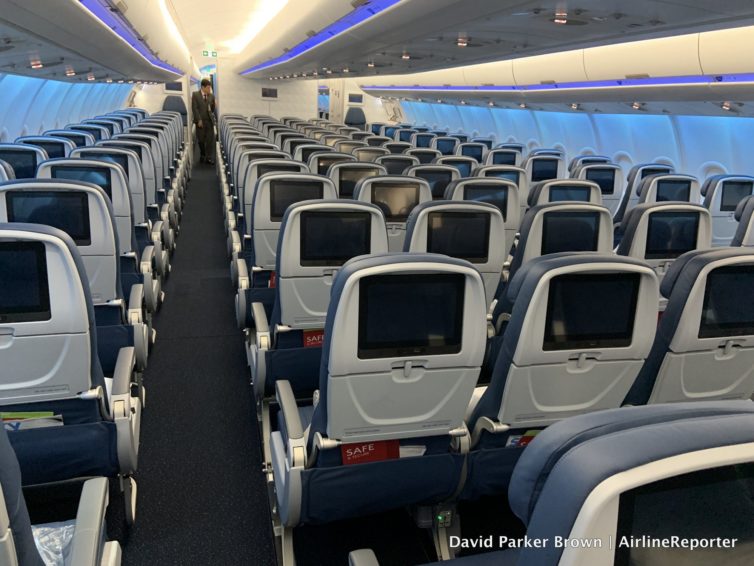
Omg, omg, omg, which seat should I sit in? I want to live, damn it!
Series Post #1: WHERE IS THE SAFEST PLACE TO SIT ON THE PLANE?
This question always gets me riled up. If you don’t want to read this whole story, let me save you the time: It does not matter what airline seat you choose. It really, really does not matter. But that doesn’t stop so many others from telling you that a wrong choice in seat could cost you your life! (dun dun DUNNN)
The anecdotal thoughts on the topic are my favorite. “First class is safest, since the airline wants to save the rich.’ Interesting…I have heard the opposite as well. “Sit over the wings, that’s the strongest part of the plane.” Of course there are huge fuel tanks located there too. “Sit in back, so you’ll be last to hit the ground, and just jump right before impact.” No joke, someone suggested that once to me and my dad, who happens to not only a pilot, but also a physicist. He was super nice about it, but it was fun conversation.
Anyhow, I wanted to find some actual data that people were using for their conclusions, and what better place to look than the internet? I found a few sites that had some good ol’ fashion data (just the way I like it). However, was this going to be good data (like Data) or bad data (like Lore)? [any Trekkies out there? If not, don’t worry, the Data/Lore joke isn’t that great anyhow]
Keep reading, because what I found will shock you to your core!!! (not really, I am just trying some of the “click bait” stuff, but keep reading, I think my best stuff is yet to come)
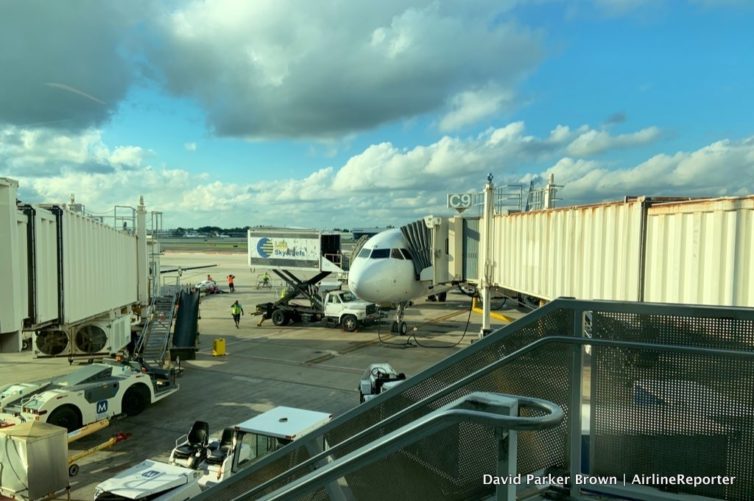
My gate at FLL gave amazing views of my Alaska Airbus A321…. not!
“What the heck is a diagcon look of an Alaska Airlines A321 first class product?” Don’t worry, I will get to that.
I had no expectation that I was going to write this review. I recently flew down to Fort Lauderdale (FLL) to hang out with Embraer and they were nice enough to put me in first class. When I was preparing for my flight home (I flew on Delta to FLL), I saw it was on an Alaska Airlines Airbus A321. Sweet. I knew that I would either be flying on one of Virgin America’s old birds with their first class product, or Alaska’s new product win/win. I did my thing and looked up the registration number, found the delivery date of the aircraft, and determined that I was going to be trying out the new product. Heck yea.
The good news and bad news is I just had a really long day, got very little sleep previously, and had just flown across the country the day before. That is bad since I wasn’t really prepared to do this review, but good since what better time to test out a product when you aren’t feeling 100%?

Pretty cool display of the new Alaska Airlines first class seat that I viewed during my previous media trip with them
Previously, I had the chance to fly down to SFO to preview Alaska Airlines’ new first class product on their Airbus A321s. I was only able to sit down in a first class seats for a short amount of time, and obviously media flights like that don’t give you a real experience of how the product compares. Know what does? A six-hour flight from Fort Lauderdale (FLL) to Seattle (SEA), that’s what! And looky there, I just recently did flew that diagcon flight.









